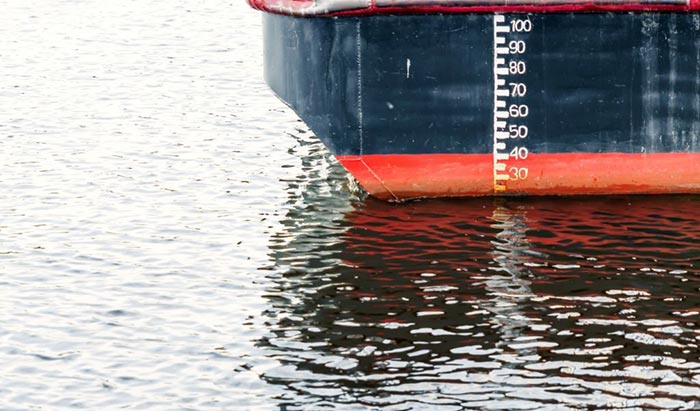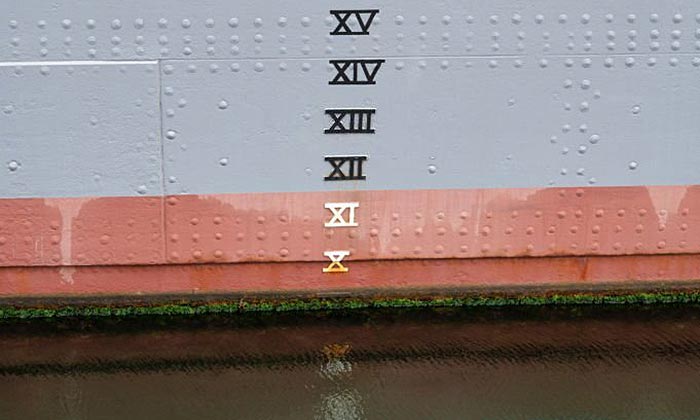There is a common misconception that the weight of a boat is the only factor in determining its displacement. However, a boat’s displacement is affected by its volume as well. Therefore, boats with the same weight can have different displacements, depending on their size.
In order to accurately measure the boat, we should consider both its weight and volume. In this blog post, we will discuss how boat displacement is determined.
Displacement, weight, and boat volume
One of the essential factors in boat displacement is weight.
- The heavier a boat is, the more displacement it will have.
- A boat with a smaller volume will have a higher displacement-to-weight ratio than a boat with a larger volume.
This means that boats with the same weight can have different displacements, depending on their size.
To accurately calculate displacement, both weight and volume must be taken into account.
When calculating displacement, it is vital to use the right units.
- Displacement is typically measured in cubic meters (m3) or cubic feet (ft3).
- Weight is typically measured in kilograms (kg) or pounds (lbs).
Examples
Here are a few examples to help illustrate how displacement is affected by weight and volume.
1. First, let’s look at two boats with the same weight.
Boat A has a volume of 2 m3, and Boat B has a volume of 10 m3.
Even though both boats weigh the same, Boat B will have a higher displacement because it has a larger volume.
In this case, Boat B has a displacement-to-weight ratio of 5 (10m3/2kg). Boat A has a displacement-to-weight ratio of 1 (2m3/2kg).
2. Now let’s look at two boats with different weights but the same volume.
Boat C weighs 2 kg, and Boat D weighs 10 kg. Even though they have the same volume, Boat D will have a higher displacement because it is heavier.
In this case, Boat D has a displacement-to-weight ratio of 5 (10kg/2kg). Boat C has a displacement-to-weight ratio of 1 (2kg/2kg).
3. Let’s look at two boats with different weights and volumes.
Boat E weighs 10 kg and has a volume of 2 m3, while Boat F weighs 20 kg and has a volume of 10 m3. Even though Boat F is heavier, it will have a lower displacement because it has a larger volume.
In this case, Boat F has a displacement-to-weight ratio of 2 (20kg/10m3). Boat E has a displacement-to-weight ratio of 2 (10kg/2m3).
As you can see, there are a variety of factors that can impact boat displacement. When choosing a boat, it is crucial to consider both weight and volume to ensure you get the right one for your needs.
If you are looking for a boat with a high displacement-to-weight ratio, you should choose a smaller and lighter one.
If you are looking for a boat with a low displacement-to-weight ratio, then you should choose one that is larger and heavier.
What’s the difference between boat weight and boat displacement?
The difference between boat weight and boat displacement is:
- Boat weight is the boat’s total weight and everything in it.
- Boat displacement is how much water the boat displaces.
Therefore, if you have a heavy engine or a lot of gear in your boat, it will weigh more and have a higher boat weight.
But even if your boat weighs more, it won’t displace more water than a lighter boat because the heavier boat will be lower in the water.
So, displacement is a better measure of a boat’s ability to float and resist waves.
If you have a boat that weighs 1,000 pounds and displaces 1,500 pounds of water, it displaces 500 pounds.
- Boat weight is important because it affects how the boat handles. A heavier boat will be slower to accelerate and harder to turn. But it will also be more stable in rough water.
- Displacement is vital because it determines a boat’s capacity to carry weight. The more displacement a boat has, the more weight it can carry before sinking. This is especially important for fishing boats and sailboats, which need to carry a lot of gear.
Generally speaking, boats with more displacement are more seaworthy than those with less. That’s because they’re better able to handle the waves and choppy waters.
However, boats with more displacement also tend to be heavier and require more horsepower to get them up to speed. So, it’s essential to consider all aspects of your boating needs when choosing a boat.
For example, suppose you’re primarily looking for a fishing vessel. In that case, you may want to go with a boat with less displacement, even if it’s not as seaworthy.
On the other hand, if you’re looking for a boat to cruise around the lake, you may want to go with one with more displacement, even if it’s a bit heavier.
Conclusion
When it comes to boat displacement vs weight, there are a few key considerations that you must take into account.
Understanding how each factor affects your boat’s performance is essential for ensuring that you make the best purchase for your needs. We hope this article has helped to clear up any confusion and given you the information you need to choose the right boat for you.


